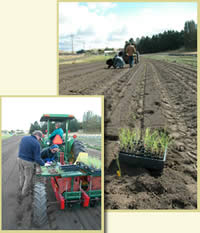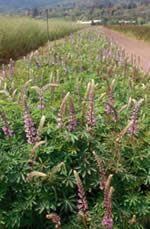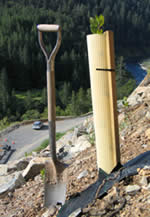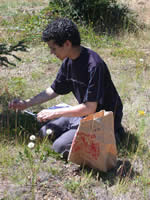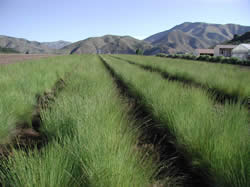USDA Forest Service Celebrating Wildflowers
|
|
|
 |
|
Native Plant Materials Policy and Authorities
The Forest Service has issued a new directive (Federal Register Notice, PDF,73 KB) for the use of native plant materials in the revegetation, restoration, and rehabilitation of National Forest System lands. This first ever national direction on native plant materials will help the Forest Service to develop and implement a native plant materials program throughout the Agency. The policy helps achieve the Agency’s goals of providing for the diversity of plant and animal communities, and restoring native species and habitat conditions in ecosystems that have been invaded by non-native species.
Key elements of the policy include:
Questions and AnswersQ. Why is the Forest Service issuing a directive for native plant materials? A. The Forest Service is issuing national policy and direction to guide the Agency on the implementation of a native plant materials program and the use of those materials. Q. What are the major changes this directive implements that are different from previous policy? A. This is new national policy. With the exception of reforestation policy, there was no previous national policy for the use of native plants. Q. How will the new policy benefit the national forests and other lands? A. We are providing direction that will be followed by all Forest Service units in the selection, development and procurement of native plant materials. The Forest Service will collaborate with our partners and other interested publics as we move forward in the implementation of this policy. This benefits the public, seed and nursery industries and other partners and cooperators in providing uniformity in the selection, development and growing of native plant materials. Additionally, the policy promotes revegetation of native ecosystems with the use of native plant materials so that those ecosystems are self-sustaining and provide improved habitat for a broad range of species including threatened, endangered and other rare species. Lastly the policy encourages the forests and grasslands to cooperate with other federal agencies, states, tribes and other organizations in the selection of native plant species; identifying sources of genetically appropriate plant materials and in the grow-out of these species so that they are readily available in large quantities and economically feasible. Q. Are any uses allowed for non-native species? A. Use of non-native, non-invasive species will be limited. Q. Where will native species come from? A. We will collaborate with other federal agencies, states, tribes, and other interested organizations and publics as we begin selecting and developing native plant materials for revegetation, restoration and rehabilitation projects. Through this collaborative process we will identify seed transfer zones that provide for genetically appropriate native plant materials. Q. Now that the policy is final, what happens next? A. When the policy is final, the Forest Service will:
|
|
| NOTE: PDF format links require the Adobe Acrobat Reader to view. | |
| top | Disclaimers | FOIA | Privacy Policy | Quality of Information | Photo Credits & Use |
Location: http://www.fs.fed.us/wildflowers/nativeplantmaterials/policy.shtml
Last modified: Tuesday, 24-Jun-2008 21:54:55 EDT
